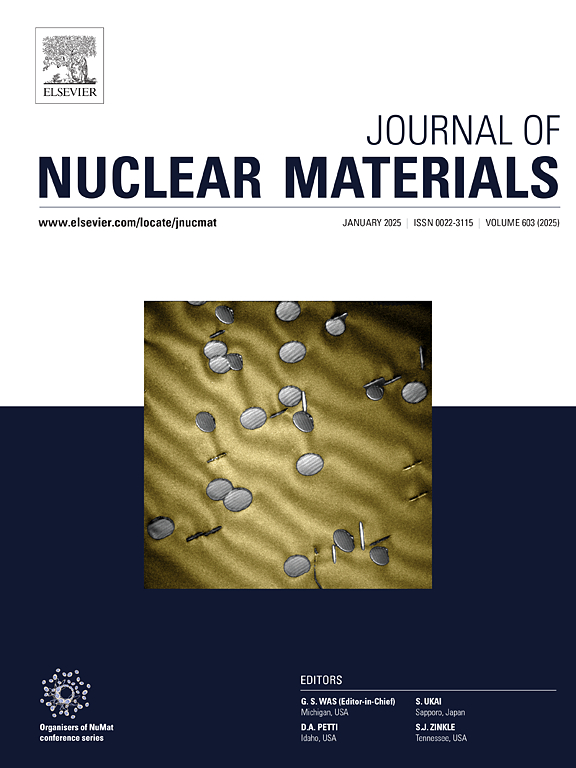Microstructural evolution in ion irradiated cold spray Cr coated Zr-alloy
IF 2.8
2区 工程技术
Q3 MATERIALS SCIENCE, MULTIDISCIPLINARY
引用次数: 0
Abstract
Chromium coating deposited on zirconium-alloy using cold spray technology is being considered as a potential approach for increasing the accident tolerance of light water reactors. In this study, high energy Xe26+ ion irradiation was performed on cold spray coated Cr/Zircaloy-4 system at 350 °C to investigate structural changes within the bulk Cr coating and at the Cr/Zircaloy-4 interface. High resolution structural and compositional analysis of the as-deposited coating revealed crystallographic coherence at the interface and nanometric segregation of Cr and Fe on the Zr-alloy side of the interface. Irradiation led to homogenization of Fe and the formation of a ∼20 nm thick amorphous layer at the Cr/Zircaloy-4 interface. Thermodynamic calculations revealed that both Fe dissolution and amorphization are favored due to the increased enthalpy provided by the high energy irradiation. The coatings exhibited a heterogeneous structure over multiple length scales, consisting of elongated and dynamically recrystallized ultrafine or nanocrystalline grains, high dislocation density, gradation in grain size, and interparticle boundaries. After irradiation, the interparticle boundaries were obliterated to be replaced by recrystallized grains and subtle grain growth. Consistent with these structural changes, nanoindentation testing exhibited slight softening of the coating after irradiation.
求助全文
约1分钟内获得全文
求助全文
来源期刊

Journal of Nuclear Materials
工程技术-材料科学:综合
CiteScore
5.70
自引率
25.80%
发文量
601
审稿时长
63 days
期刊介绍:
The Journal of Nuclear Materials publishes high quality papers in materials research for nuclear applications, primarily fission reactors, fusion reactors, and similar environments including radiation areas of charged particle accelerators. Both original research and critical review papers covering experimental, theoretical, and computational aspects of either fundamental or applied nature are welcome.
The breadth of the field is such that a wide range of processes and properties in the field of materials science and engineering is of interest to the readership, spanning atom-scale processes, microstructures, thermodynamics, mechanical properties, physical properties, and corrosion, for example.
Topics covered by JNM
Fission reactor materials, including fuels, cladding, core structures, pressure vessels, coolant interactions with materials, moderator and control components, fission product behavior.
Materials aspects of the entire fuel cycle.
Materials aspects of the actinides and their compounds.
Performance of nuclear waste materials; materials aspects of the immobilization of wastes.
Fusion reactor materials, including first walls, blankets, insulators and magnets.
Neutron and charged particle radiation effects in materials, including defects, transmutations, microstructures, phase changes and macroscopic properties.
Interaction of plasmas, ion beams, electron beams and electromagnetic radiation with materials relevant to nuclear systems.
 求助内容:
求助内容: 应助结果提醒方式:
应助结果提醒方式:


